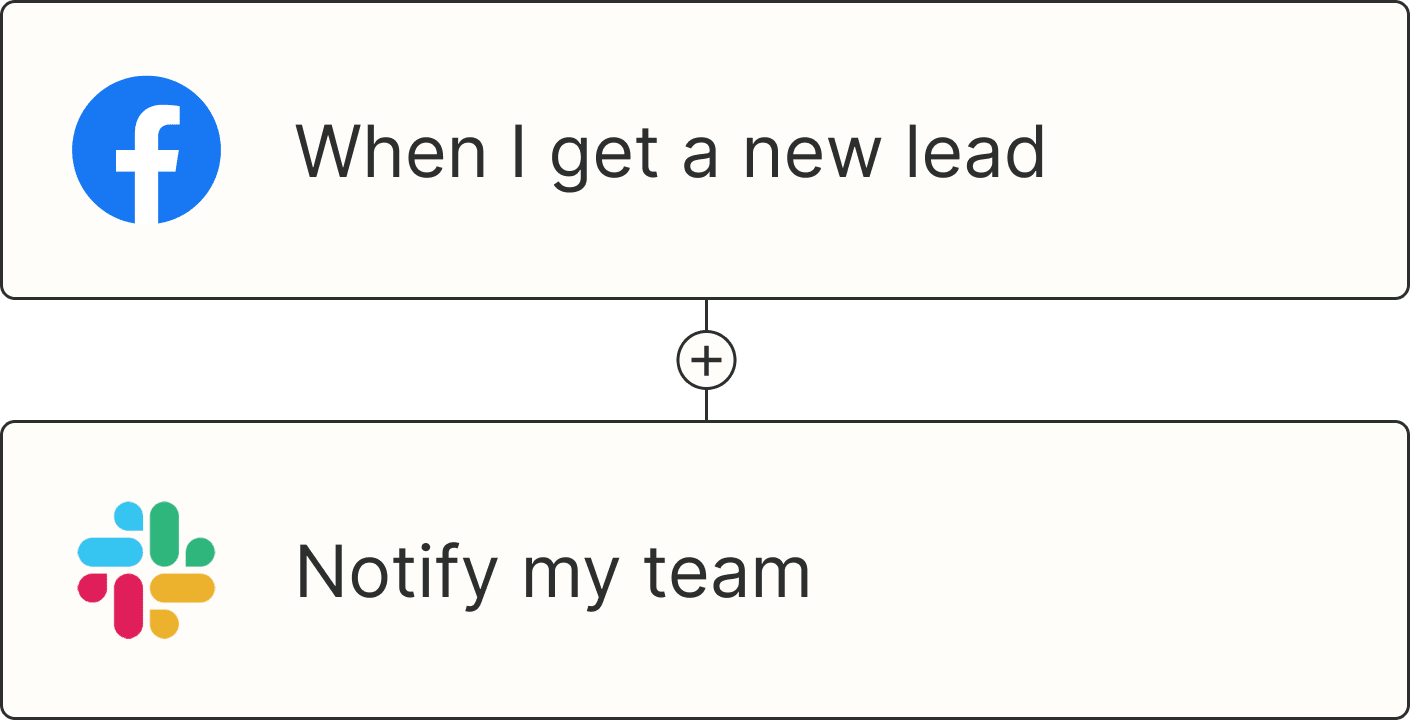In our relentless pursuit of efficiency and specialization, businesses have ended up with a menagerie of software as a service (SaaS) tools, each one working to improve a specific aspect of our work lives. But manually wrangling these disparate tools into an integrated workflow feels about as futile as paddling away from a tsunami.
SaaS integration fixes this by creating a cohesive ecosystem where your apps share information automatically—no human intervention required. Sounds magical, right? Well, here's how it actually happens.
Table of contents:
What is SaaS integration?
SaaS integration is the process of connecting separate cloud-based platforms so they can share data and work together seamlessly. Instead of manually transferring data between apps (which is both arduous and error-prone), integration automates that process.
This matters because modern businesses hoard specialized tools like my wife hoards water bottles—recklessly and without any forethought. Without integration, your apps are siloed environments that refuse to communicate with each other. SaaS integration connects them using various methods (which we'll get to in a minute) to create automated workflows, allowing resources to move freely without your constant involvement.
For example, when a new lead fills out a form on your website, integration can automatically:
Add their information to your CRM
Trigger a welcome email from your marketing platform
Create a task in your project management tool
Update your sales dashboard
Notify your team in a chat app

You get to decide what data gets transferred, when it happens, and what actions should happen in response.
Traditional SaaS integrations rely on predefined rules and workflows. While these methods are effective for straightforward data transfer and automation, they struggle with complex decision-making, pattern recognition, and adaptive learning.
AI is transforming integration from simple point-to-point connections into intelligent workflow orchestration. Modern AI-powered integration can understand context, make decisions, transform information, and even suggest smarter ways for your apps to communicate.
For example, rather than just dutifully shuttling customer data from your CRM to your email marketing platform, an AI-powered integration can analyze the customer's behavior patterns, select the most appropriate email campaign, personalize the message content, and fire it off at an optimal time—all automatically.
AI is making SaaS integration even easier in other ways, too, especially with the new Model Context Protocol.
Types of SaaS integrations
Let's go over some common SaaS integration methods. Because if there's one thing that gets the blood pumping, it's the seamless syncing of data between cloud-based software platforms.
Type | Definition | Pros | Cons | Best for |
|---|---|---|---|---|
API-based | Direct data exchange through coded connections (e.g., HubSpot <> Salesforce) | Real-time, flexible | Dev work required | Teams with coding expertise, apps that have open APIs |
Webhooks | Data pushed on events (e.g., form submission triggers data update) | Efficient, event-driven | Needs setup for each trigger | Quick notifications without constant polling |
iPaaS | Centralized platform with pre-built connectors | No-code, good for complex workflows | Can get pricey at scale | Large stacks, frequent data sync needs |
RPA | Uses bots to mimic user actions to transfer data | Useful for legacy systems | Fragile if interfaces change | Workflows requiring a human-style approach to older tools |
Custom integration | Ground-up integrations coded for unique demands | Unlimited customization | Expensive, resource-intensive | Proprietary needs that off-the-shelf connectors can't handle |
API-based integration
Most SaaS integrations happen through application programming interfaces (APIs), which provide a standardized way for different apps to share data. They create a direct connection between platforms so that when something happens in one app (say, a new customer signs up in HubSpot), it automatically reflects in another app (like Salesforce).
If two apps have open APIs, you (or your company's overworked developer) can write some code that makes them share data directly. It's powerful and flexible, but it does require some tech know-how.
Webhooks
Webhooks are like APIs but lazier—in a good way. Instead of constantly asking the other platform for new data (which is what an API does), a webhook automatically sends data when a specific event happens. For example, if someone fills out a form in App A, a webhook can instantly tell App B to update the record.
Integration platform as a service
Integration platform as a service (iPaaS) providers offer a centralized platform for building and managing integrations. They typically offer features like data mapping, transformation, and error handling that would otherwise require custom development. Zapier, for example, offers pre-built connectors to 7,000+ apps and a no-code visual interface that simplifies the integration process.
iPaaS is great for big companies with lots of apps and complex workflows.
Robotic process automation
Robotic process automation (RPA) uses bots to mimic human actions and automate repetitive tasks, like clicking buttons or copying data from one app to another. Unlike API integration, which connects at the data level, RPA operates at the user interface level.
This approach is particularly useful for integrating legacy systems that don't have modern APIs. It's like building a robot to connect an old VCR to your smart TV because the manufacturer went out of business in 1997.
Custom integration
Sometimes, off-the-shelf solutions don't cut it. Custom integration involves building bespoke connections from scratch to meet specific needs. While powerful, they can be time-consuming and super expensive.
Custom integrations are generally appropriate when you have unique requirements that can't be met by standard integration methods or when you need deeper integration with your proprietary systems. I'd say always try iPaaS before going this route—a tool like Zapier can handle most businesses' needs.

Benefits of integrating SaaS apps
Running a business without proper integration is like trying to assemble a LEGO Millennium Falcon without the building instructions. Investing in SaaS integration, on the other hand, is like discovering you've been sitting on the instruction booklet this whole time—suddenly, everything clicks into place. Here's why it's a difference-maker:
Reduces human error: Manual data entry is basically an open invitation to chaos. SaaS integration automates data transfer, minimizing manual input and associated mistakes. Take that, human fallibility.
Improves data consistency across platforms: When one system says a customer's order is "pending" while another insists it's "completed," you've got a problem. Integration ensures that when you update data in one system, the change propagates everywhere. No more version control nightmares or conflicting records.
Automates business processes: Integration allows you to create end-to-end automated workflows spanning multiple platforms. For instance, imagine a new lead requests a quote on your website. Instead of Trish from HR manually adding them to the CRM (probably after lunch, if she remembers), the lead gets added to the system, assigned to a rep, enrolled in an email sequence, and scheduled for follow-up—all automatically.
Leverages AI for intelligent workflow decisions: Integrated AI enhances decision-making with data-driven insights and predictive analytics. AI-driven workflows can spot patterns, predict trends, and suggest next steps before you've even realized there's a decision to be made.
Boosts visibility across business operations: Without integration, compiling a business report means gathering data from six different platforms, manually cobbling it together, and hoping it doesn't contradict itself halfway through. With integrated systems, you can create dashboards that pull real-time data from everywhere—sales, support, operations—so you can get the full picture.
Enables faster decision-making: With real-time data flowing between systems, your team can make decisions based on current information rather than waiting for manual updates or periodic data transfers. Fast decisions mean faster outcomes—whether they're good or bad is another matter entirely.
Supports scalability: Manually managing customer data might work when you have 20 customers. Try doing it with 2,000, and you'll wish you'd taken that job in a lighthouse instead. SaaS integration creates scalable processes that can handle growing volumes without needing to hire an army of admins.
SaaS integration examples
SaaS integration sounds great in theory—but what does it actually look like in practice? These real-world use cases might spark some ideas for your own business (or at least give you something to daydream about during your next boring meeting).
CRM and marketing automation
Imagine you're using a CRM to manage your sales leads, but you also rely on a separate marketing automation platform to nurture those leads. Without integration, you're stuck manually importing and exporting data between systems with all the innovation of a caveman bashing two rocks together.
By integrating your CRM and marketing automation platforms—like connecting Salesforce with HubSpot—you can automatically sync new leads with your CRM, track customer behavior, and update contact records in real time. Here are a couple of pre-made templates to show you what that might look like at a basic level, but you can build fully automated systems across your sales and marketing tools.
Add Salesforce leads from new HubSpot form submissions
Find accounts and update custom objects in Salesforce from new contacts added to a list in HubSpot
Project management and communication
When project management tools integrate with communication platforms, it reduces the need for status meetings and ensures nothing falls through the cracks.
For example, you might connect Asana with Slack so you can enjoy the constant ping of notifications as your colleagues assign you new tasks, update existing ones, and generally micromanage your every waking moment. And if you ever dare to have a conversation outside of the designated project channels, it can be linked to the relevant Asana project, ensuring that no shred of human spontaneity or creativity goes unrecorded.
Here are some examples, but you can create complex workflows that connect thousands of apps.
Send new Asana tasks in projects as Slack channel messages
eCommerce and inventory management
For online retailers, connecting eCommerce platforms with inventory and accounting systems creates a streamlined order-to-cash process. Connecting your eCommerce storefront with your payment gateways and all the other apps you use to run your business can streamline all of your processes.
For example, by integrating Shopify and QuickBooks, you can send all orders to your accounting app, ensuring your inventory is always accurate, your accounting is up-to-date, and you never have to explain to an angry customer why the thing they bought doesn't exist.
Create QuickBooks Online invoices for new Shopify orders
Generate sales receipts in QuickBooks Online for new orders in Shopify
HR and payroll systems
Recruiting used to be as simple as slapping a "help wanted" sign on the door and hoping someone halfway qualified wandered in off the street. Now, it's an Olympic-level sport requiring LinkedIn stalking, personality assessments, and reading between the lines of "highly motivated team player."
By integrating an AI-powered recruiting platform with your existing HR tools, you can automate and streamline the hiring process so you're not left manually sifting through resumes like it's the last scene of "Raiders of the Lost Ark." For example, you might connect Manatal to Google Sheets or Typeform, so that whenever someone is added to a spreadsheet or fills out a hiring form, their information is automatically synced in your system.
Generate candidates in Manatal from new Google Sheets rows
Create organizations in Manatal from new Typeform entries
Customer support and analytics
Nothing says "we value your feedback" like storing customer complaints in a mystical void completely disconnected from your decision-making data. Without proper integration, crucial customer insights collect dust while executives make decisions based on vibes.
For example, if you combine a feedback capture tool like MightyForms with an analytics tool like Looker, you can automatically get all your insights where you need them and turn those forgotten complaints and half-hearted survey responses into actionable insights. You can track which products cause the most headaches, identify trends in customer satisfaction, and even use AI to predict fires before they start.
Create new Looker users from new MightyForms submissions
Create new users in Looker for every new entry in Typeform
And these are just simple examples to give you a sense of how it works. You can use SaaS integration to solve complex challenges, scale operations, and build fully automated systems across your business.
5 strategies for successful SaaS integration
Now that you know what SaaS integration is (and why you need it), let's talk about how to do it right.
1. Assess business needs
Before diving into integration projects, map your existing tech stack—take inventory of all the SaaS applications your organization uses. Marvel at the redundancy, overlap, and sheer idiocy of it all. Ask yourself:
Is this app essential, or just a security blanket?
Are people actually using it?
Are there any overlaps? (Why do you have Slack and Microsoft Teams? Stop it.)
Noting each app's purpose, user base, and the types of data it contains will help you identify automation opportunities.
Next, figure out where the gaps are in your current workflows. What data is getting lost? Where are the bottlenecks? Are your employees doing the same manual tasks over and over (and hating you for it)? This will help you identify the most impactful integrations and avoid wasting time on unnecessary connections.
2. Choose the right tools
Now it's time to choose your fighter. Not all integration platforms are up to the job. Some just offer basic one-to-one connections, while others provide advanced workflow orchestration and AI capabilities.
Look for a platform that:
Offers pre-built connectors for your key apps
Supports complex multi-step workflows
Includes AI-based optimization and error detection
Can scale with your business and workflows as you grow
If you want to automate entire workflows instead of just setting up basic connections, go with a comprehensive platform like Zapier.
Also, don't forget about native integrations. Some SaaS vendors offer their own pre-built connectors, though they might be a little less customizable.
3. Prioritize data security
Fun fact: when you integrate SaaS apps, you're basically opening up a whole new set of doors for hackers to sneak through. Cute, right?
Make sure you're using encryption and secure APIs, trusted integration platforms, and if you're working with regulated data (like healthcare or financial information), make sure your integration tools are compliant with the relevant standards (like HIPAA or PCI DSS).
Document your security measures and create an incident response plan specifically for integration-related issues. You'll want one that involves more than just panic-Googling and disassociation.
4. Leverage scalable solutions
Integrations need to grow with you. What works for a scrappy five-person startup might not hold up once you're a 200-person chaos factory.
Instead of rigging up a bunch of flimsy point-to-point integrations, go for an iPaaS setup. It's more stable, scalable, and less likely to implode under pressure.
When designing integrations:
Use flexible data mapping that can accommodate schema changes
Implement error handling and retry mechanisms
Create modular workflows that can be reused and combined
Budget for growth
Don't be afraid to start small and iterate over time. There's no need to boil the ocean—just focus on solving your most pressing needs first, then build from there. Crawl, walk, run, as they say.
5. Document the process
Creating documentation is the pits. But you know what's worse? Spending six hours trying to figure out why your Airtable-Gmail integration broke because someone forgot to mention they changed a field name.
Write it all down, including:
Why the integration exists
Which apps are involved
What data is flowing where
How to set up authentication
How to troubleshoot when it (inevitably) fails
And for Pete's sake, update the documentation when things change. Outdated documentation is worse than no documentation at all because it tricks you into thinking you know what's going on when you absolutely do not.
If you choose a robust automation platform like Zapier, you'll get access to analytics, user management, and other important documentation features built in.
Integrate your tech stack with Zapier
Now that you've wrapped your head around the basics of SaaS integration (congrats, by the way—that's more than I've ever accomplished in a single day), you're probably champing at the bit to kick-start your own integrations.
Zapier goes beyond simple one-to-one integrations—it orchestrates complex workflows across multiple platforms, incorporating AI and smart triggers to make your business run smoother.
The best part is you don't need to be a developer to use Zapier. With a user-friendly drag-and-drop interface and 7,000+ app connections, Zapier empowers you to build the custom workflows of your wildest dreams—no coding wizardry required.
Related reading:








